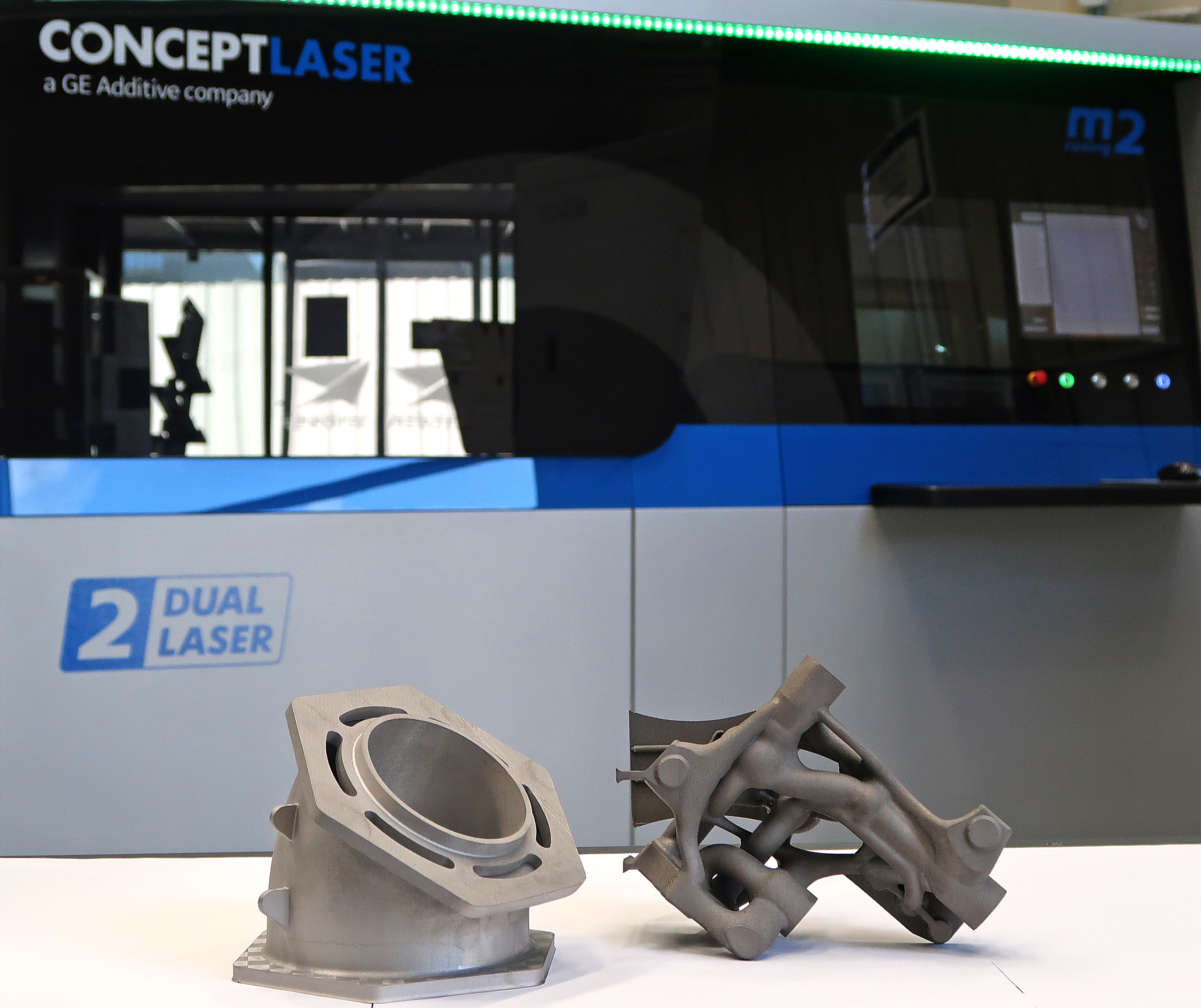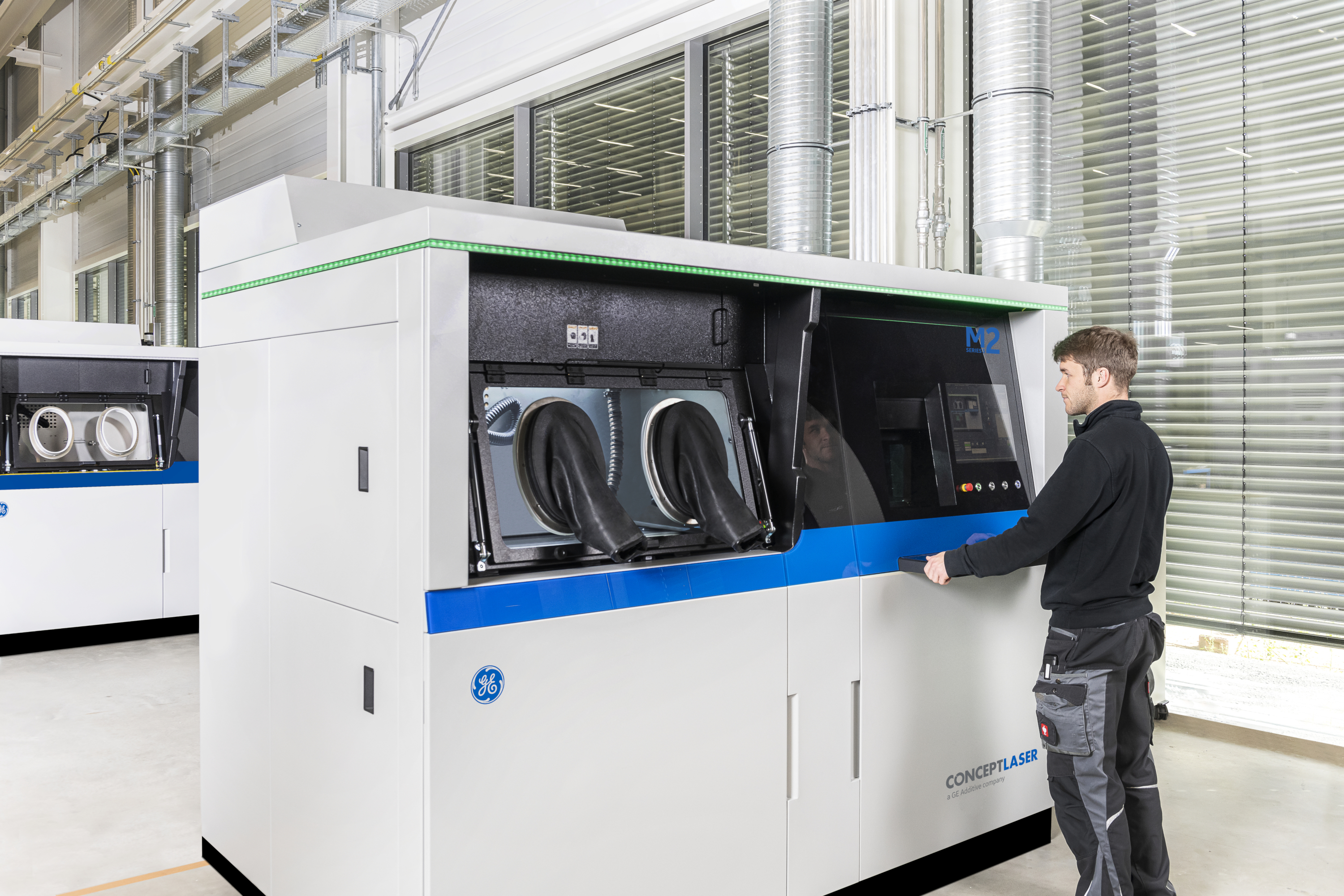Aerospace supplier Premium AEROTEC, together with 3D printer manufacturer GE Additive, has announced that it has reached a new productivity milestone in the series production of titanium parts for the aviation sector.
Just last year, the partners, with help from aerospace manufacturer Airbus, were successful in qualifying multi-laser titanium builds on a GE Additive Concept Laser M2 system, and have since been working on increasing the machine’s throughput.
Thomas Bielefeld, Project Manager at Premium AEROTEC, explains: “With this advanced technology, we are now able to achieve a homogeneous, quasi-isotropic structure with excellent material properties in the overlap area, which does not show any discernible differences from the previous quality standard. At the same time, with our partner GE Additive, we have succeeded in increasing productivity in component production by more than 30 per cent.”

The Concept Laser M2
GE’s flagship system features two lasers and a build volume measuring 250 x 250 x 350mm, as well as a 3D optic with variable spot diameter. The current generation of the machine, series 5, was designed with regulated industries in mind and claims to deliver the accuracy, repeatability, and safety necessary to produce such parts.
Similar multi-laser systems tend to cite higher build rates as a selling point, but process qualification has largely been limited to parallel assemblies until recently, whereby each part in the chamber is assigned its own laser. This means that single large part builds generally do not benefit from the presence of the second laser.

High throughput production for aviation
Last year’s qualification helped lift this limitation, as a single large component was successfully fabricated using both of the machine’s lasers. The overlap zone, which is also known as the stitching zone, relies on extremely high precision sensor calibration to be successful. Compensation for factors such as the process heat is also a must.
Premium AEROTEC has already stated plans to use the validated system to produce multi-laser components for the Airbus A320 series. Together, the partners are also now working on further improving the build rate of the machine to make industrial additive manufacturing a more attractive option for aerospace and aviation manufacturers worldwide.
Udo Burggraf, Senior Key Account Director at GE Additive, adds: “We are thrilled and satisfied to have reached this milestone in cooperation with Premium AEROTEC. We owe this success primarily to the teams at Premium AEROTEC and GE Additive, who for many years have worked well and closely together on this project. This was not the first success and it will certainly not be the last.”
Just last month, aerospace manufacturer Boeing qualified 3D printer OEM Stratasys’ Antero 800NA thermoplastic filament for flight parts. As such, the PEKK-based polymer can now be used to additively manufacture end-use components aboard Boeing’s planes.
Elsewhere, materials company Hexcel recently launched a new electrically-conductive polymer-based carbon fiber composite designed for the 3D printing of flight-ready aviation parts. HexPEKK EM meets the static electricity management, electromagnetic (EM) shielding, and radiation absorption needs of advanced aircraft applications, making it particularly suited to the application.
Subscribe to the 3D Printing Industry newsletter for the latest news in additive manufacturing. You can also stay connected by following us on Twitter and liking us on Facebook.
Looking for a career in additive manufacturing? Visit 3D Printing Jobs for a selection of roles in the industry.
Featured image shows titanium parts 3D printed on the Concept Laser M2. Photo via GE Additive.



